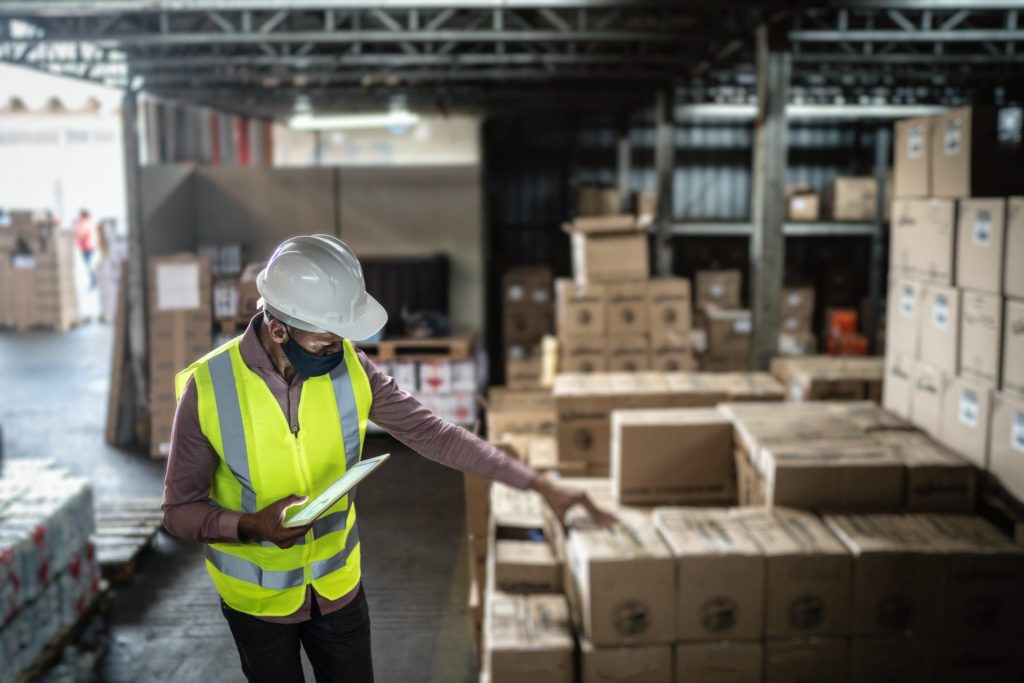[ad_1]
It may be 2022, but many of the forces that drove the economy in 2021 are still in the driver’s seat. The long-term upward trend of e-commerce is stronger than ever. The supply chain that gets products from websites to consumers is still not performing well. Inflation is rising, and the Federal Reserve probably will soon raise interest rates.
Luckily for us, there’s an investment that may benefit from each of these forces — specifically, industrial real estate, which includes properties such as warehouses, manufacturing facilities, and even marijuana growing facilities. Industrial REITs (real estate investment trusts) have already been one of the strongest performers since the pandemic started, returning over 57% through November 2021, according to Nareit. Three industrial REITs positioned to perform well in 2022 are: Americold Realty (NYSE:COLD), Prologis (NYSE:PLD), and Innovative Industrial Trust (NYSE:IIPR).
Put on your hardhat and let’s talk about industrial real estate.

Image source: Getty Images.
E-commerce growth
E-commerce growth isn’t a new phenomenon, but the pandemic took it to a new level. U.S. e-commerce revenue was up 48% from 2019 to 2021 and is forecast to almost double during the next four years .
Every time someone buys a book from Amazon or shoes from Zappos, the order has to be fulfilled somewhere. The more revenue e-commerce companies earn, the more money they plow into new warehouses and fulfillment centers. This drives up the demand for industrial real estate.
It’s also important to keep in mind that not all e-commerce companies need barebones warehouses. A lot of growth is coming from online grocery shopping. That’s a trend that favors Americold Realty, which owns cold-storage facilities. Americold was one of the few industrial REITs to perform badly last year — it now sits about 30% below its 2021 high. The company saw reduced occupancy in 2021 due to its customers’ labor shortages and had to reduce earnings forecasts as a result. It has weathered problems before (it was founded 120 years ago) and it’s still setup to profit from the long-term trends in the e-commerce industry and rising demand for home grocery delivery.
Interest rate immunity?
Higher interest rates are a real estate investor’s worst nightmare. Investors have better options for yield. Buyers can’t pay as much because of the budget constraint with debt payments. Developers have a harder time coming up with financing for new properties.
Industrial real estate won’t be hit as hard as other real estate types. Not only is industrial real estate often purchased by seasoned businesses with solid finances, but also because newer e-commerce businesses or REITs are buying industrial real estate and driving demand.
Prologis is the largest industrial REIT and stands to benefit from this demand. It owns 1 billion square feet of industrial space in 19 countries that are leased to 5,800 different customers. Despite its size, Prologis has grown cash flow at a 10% rate over the past five years and has a vacancy rate that’s under 3%. It doesn’t have quite the same growth potential of the other REITs in this article, but it consistently performs and returns cash to shareholders.
Moonshot businesses
You don’t usually look to real estate for explosive growth. But there are some explosive growth industries that are looking for industrial real estate. Think about cannabis and crypto.
Cannabis is a high-growth business everywhere it is legalized (and in many places where it isn’t). All of that marijuana needs to be grown somewhere, and indoor growing facilities are one of the best and most efficient places to do it. Add that to the fact that many marijuana businesses can’t find a bank to hold their money because of federal regulations, and it’s easy to see future demand from this industry. Why stuff $10 million under your mattress when you could buy another growing facility?
Innovative Industrial is the leading REIT in this niche. It purchases facilities from seasoned growers and leases them back under long-term agreements. The REIT owns more than 100 properties with 7.8 million square feet in 19 states. If marijuana production continues to grow and is legalized nationally, Innovative Industrial will have the expertise to quickly grow along with the industry.
Crypto is similar. It needs large facilities for growing (mining new coins). Most banks aren’t sure how to deal with it yet. And a lot of early innovators have more cash than they know what to do with. It’s true that crypto is getting more eco-friendly and requires less space than it once did, but it still needs a lot. That will equal demand for industrial real estate.
Supply and demand
In the end, everything comes down to supply and demand. Prologis recently reported a nationwide vacancy rate of just 3.9% for industrial real estate. That means supply is low. Meanwhile, each of the forces described above is pushing demand further and further past pre-pandemic highs. It all adds up to more gains in industrial real estate — maybe even if the rest of the market isn’t cooperating.
This article represents the opinion of the writer, who may disagree with the “official” recommendation position of a Motley Fool premium advisory service. We’re motley! Questioning an investing thesis — even one of our own — helps us all think critically about investing and make decisions that help us become smarter, happier, and richer.
[ad_2]
Source link
